Abstract
The pattern of maternal age-specific incidence of autosomal trisomy in spontaneous abortions was examined for each chromosome for which a sufficient number of trisomies was observed. This included chromosomes 2, 4, 7-10, 13-16, 18, and 20-22. The rate of increase after age 30 for each of the small chromosomes (groups D-G) was similar, with the exception of chromosome 16, which showed a significantly shallower rate. The C group chromosomes tended to have an intermediate rate of increase after age 30, with the exception of chromosome 7, which had a pattern similar to the smaller chromosomes. The larger chromosomes (2 and 4) had the smallest rate of increase. There was a significant relationship between chromosome size and rate of increase after age 30 (after excluding chromosome 16), but not with rate of increase before age 30. The results suggest that autosomal trisomies may be of heterogeneous origin, with a maternal age-related factor associated with chromosome size and other sources unrelated to chromosome size. Additional evidence for and against this hypothesis is discussed.
Full text
PDF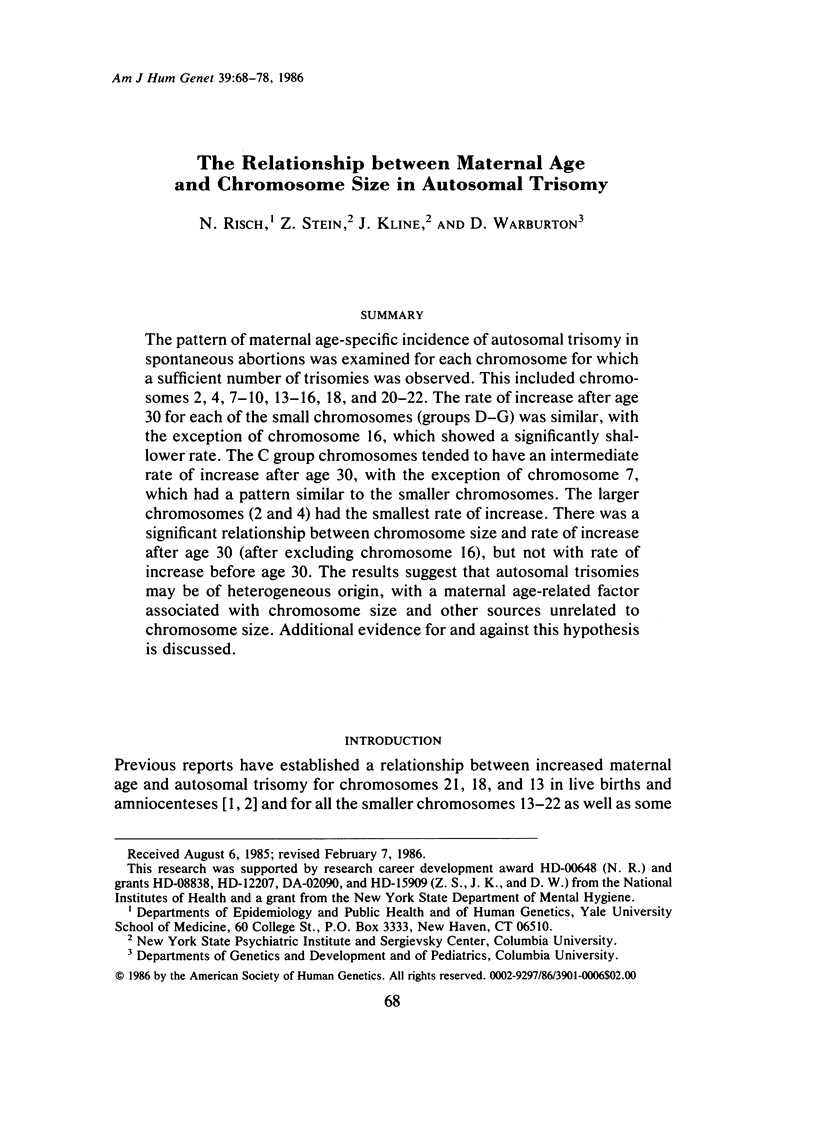
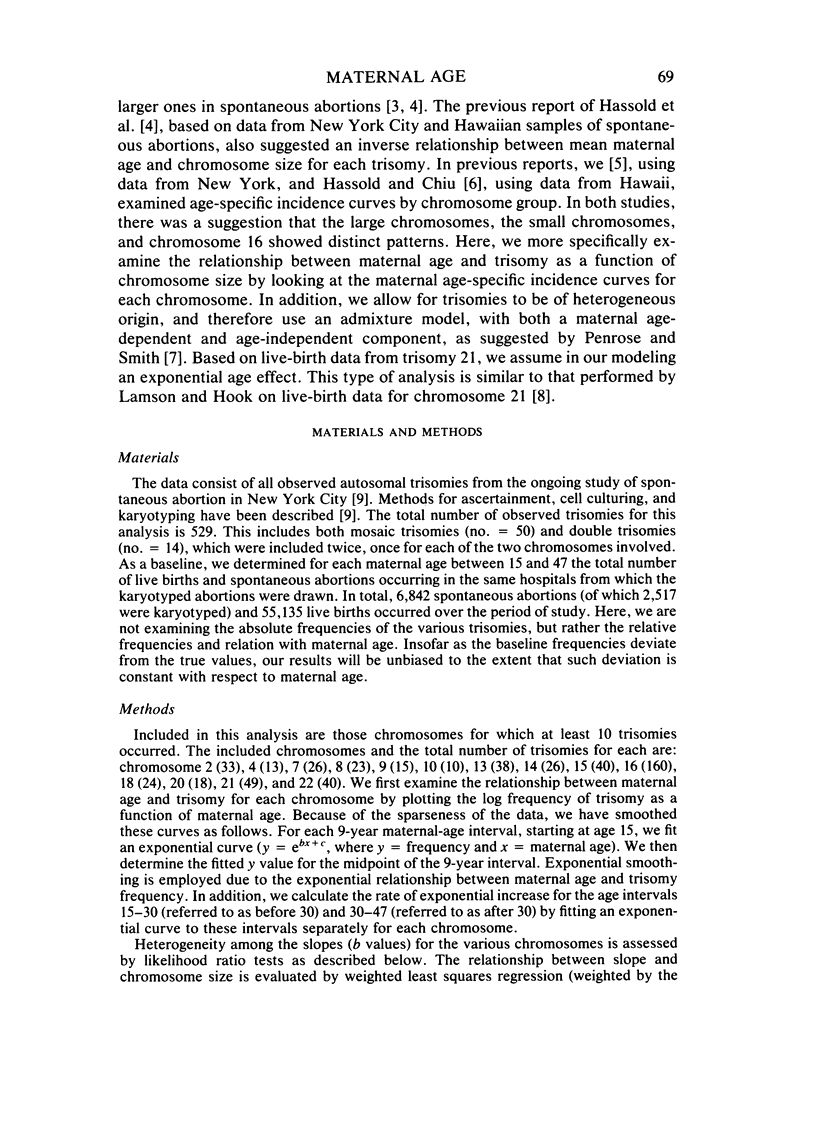
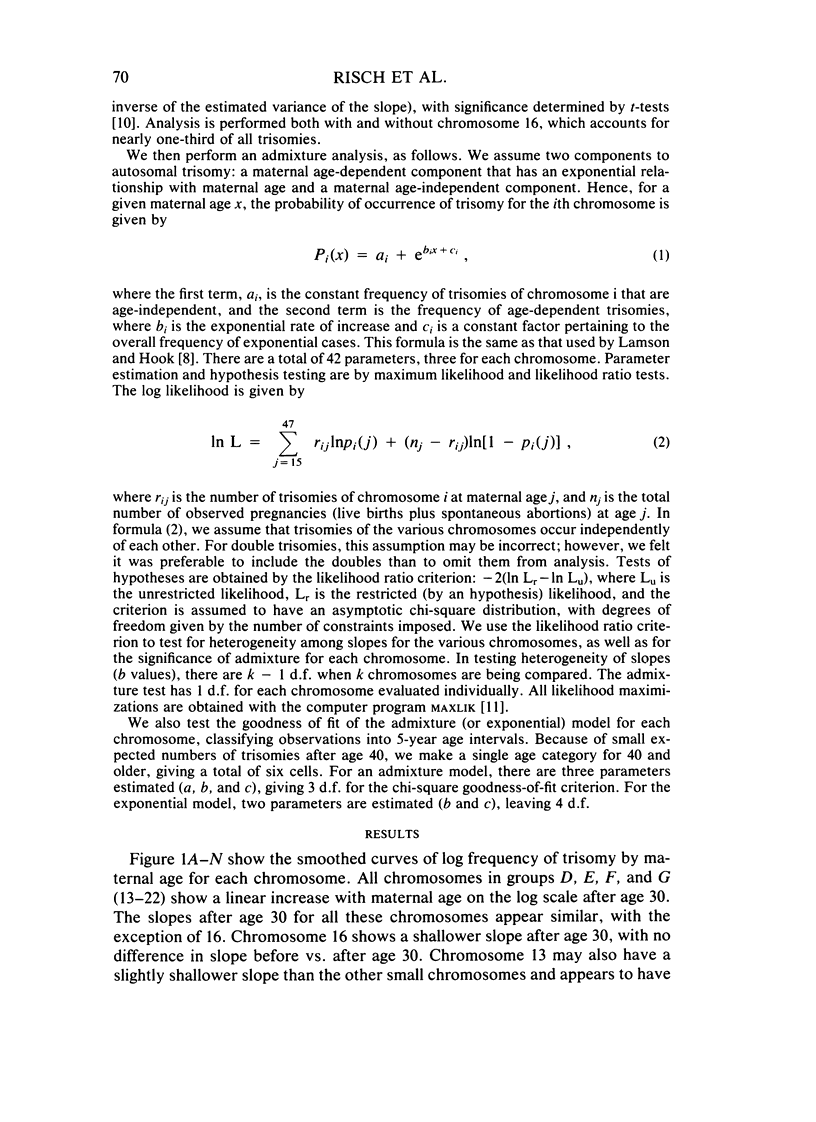

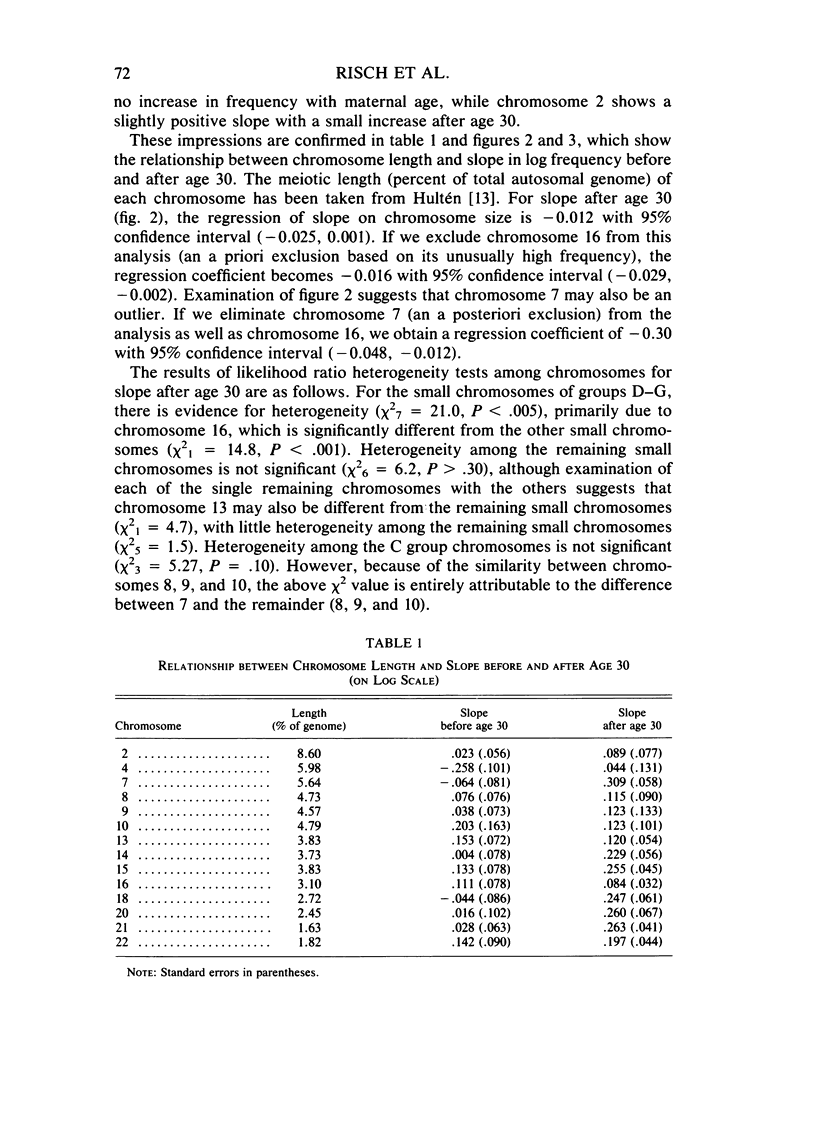
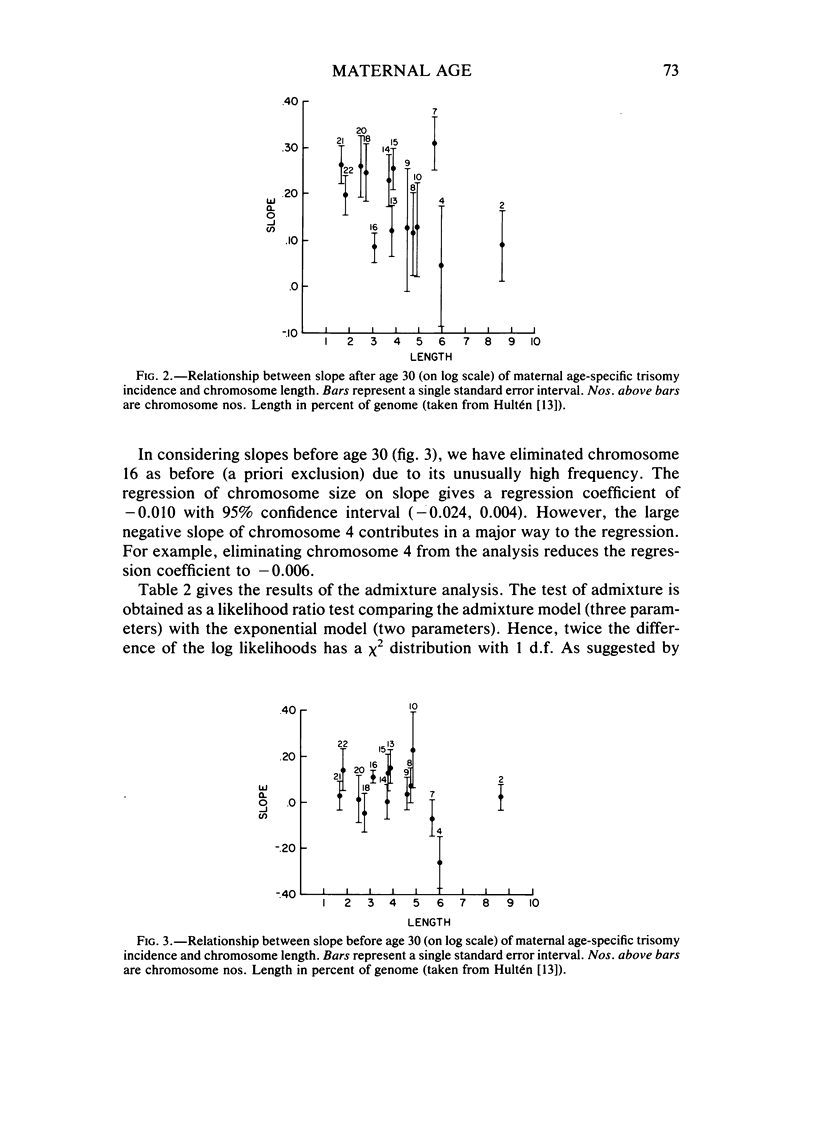
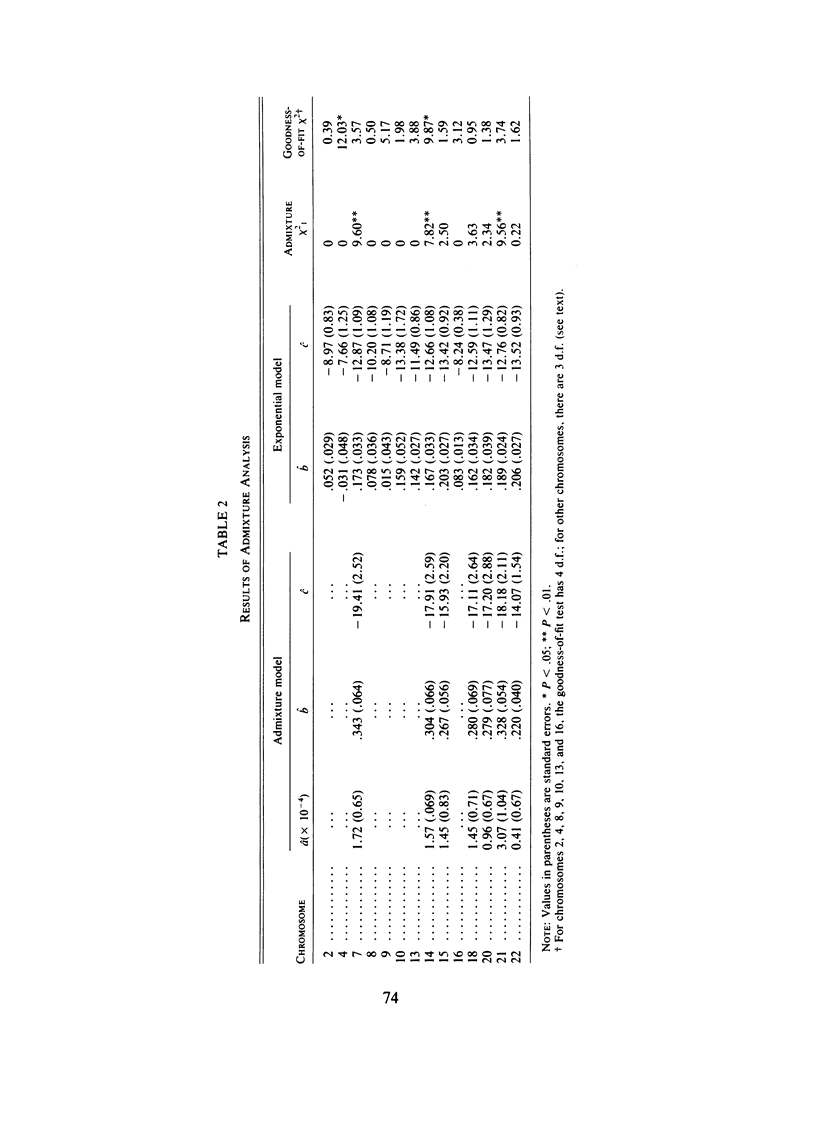
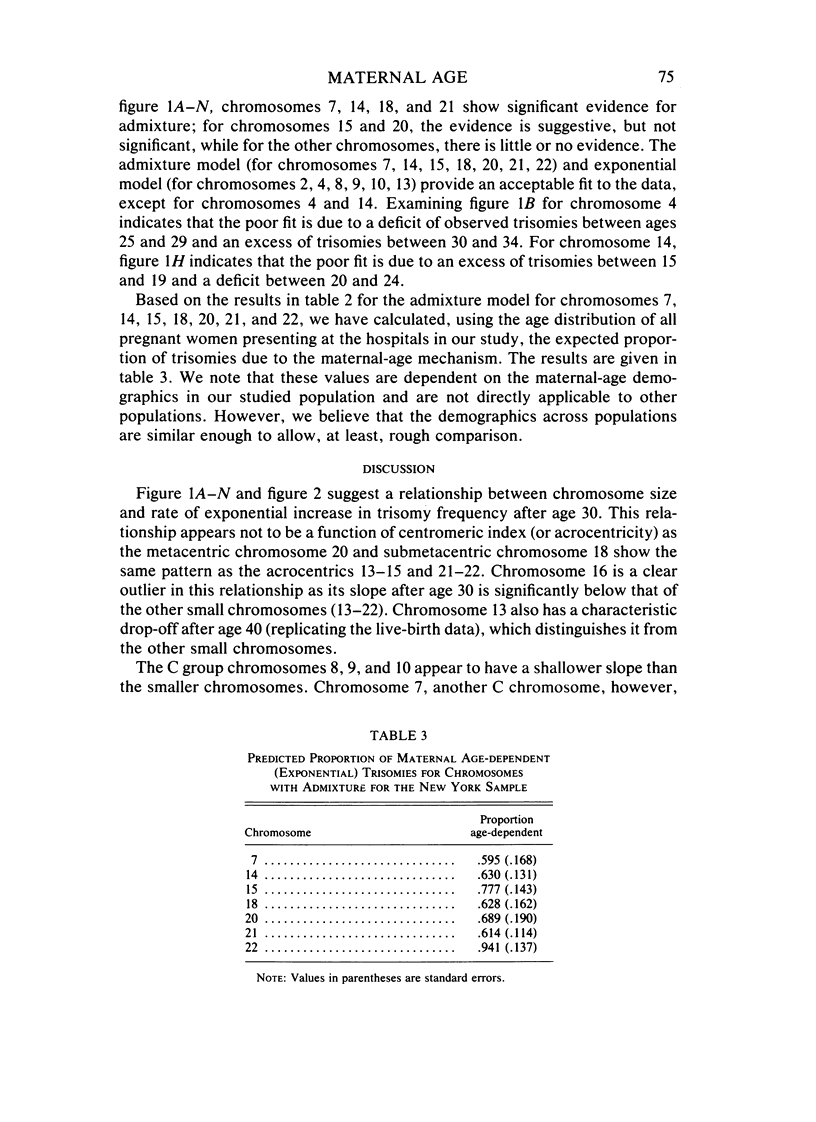
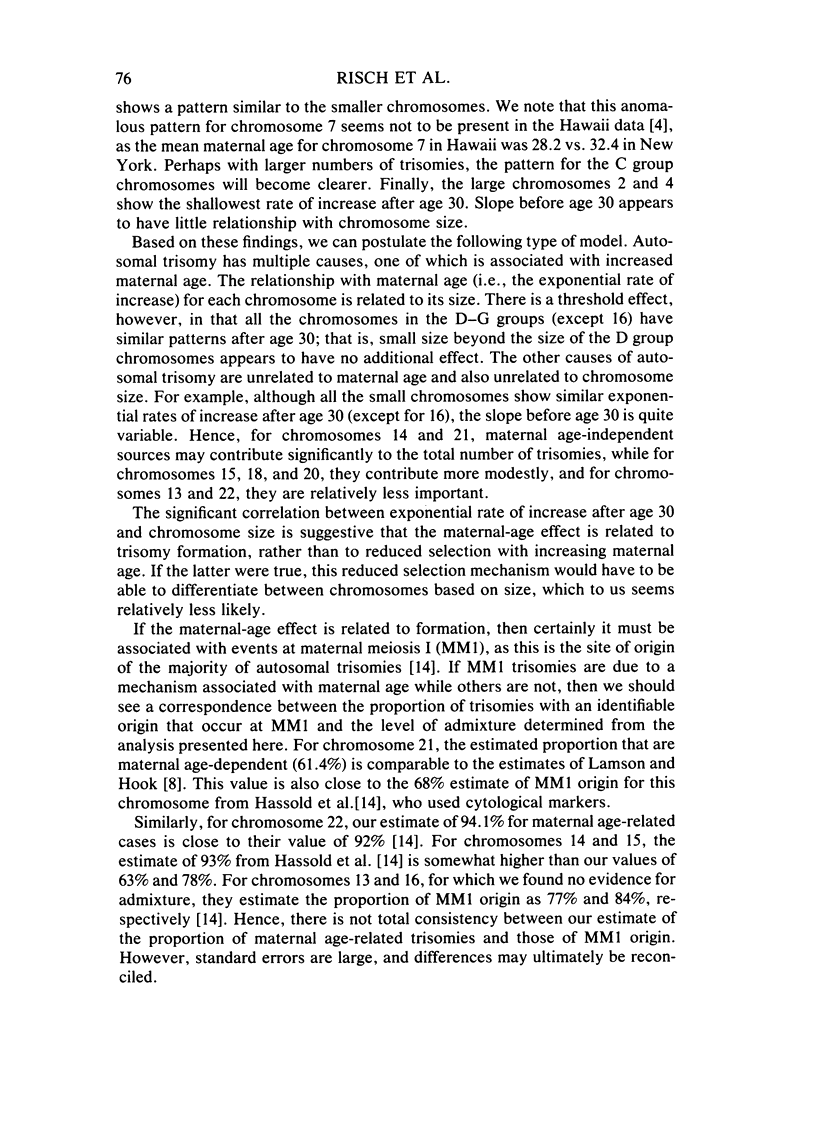
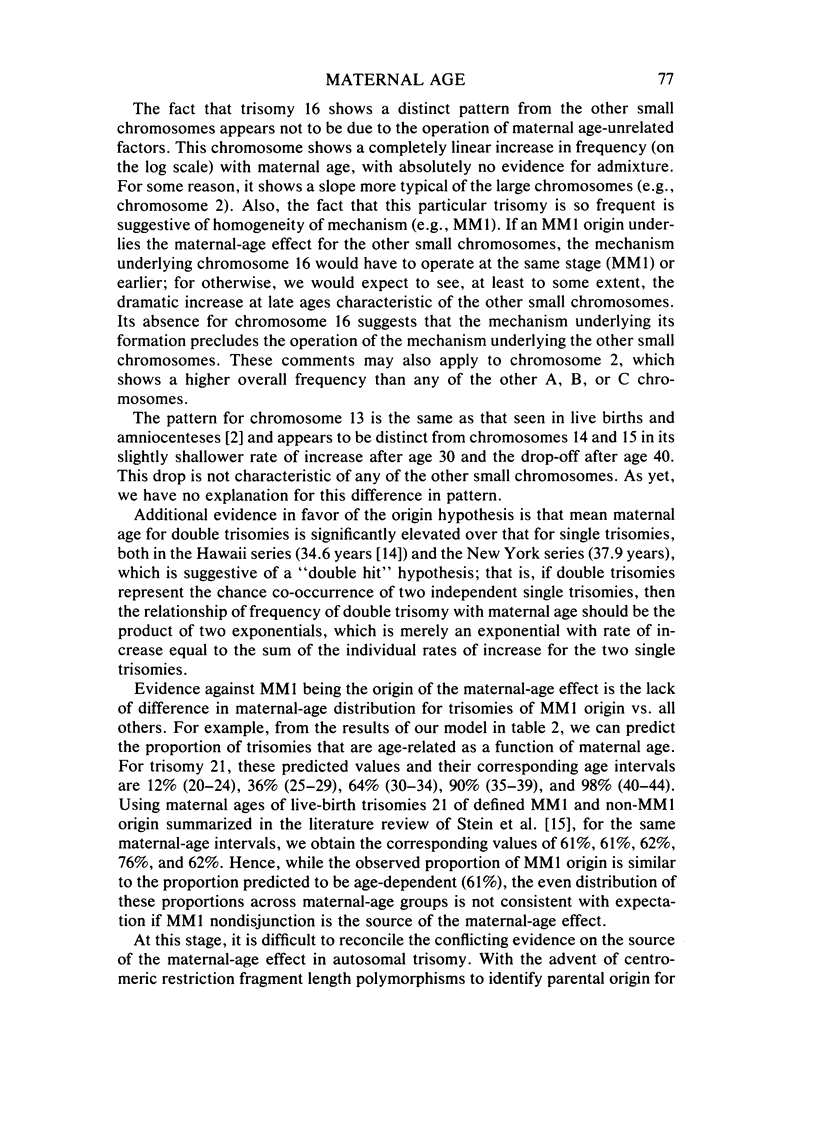
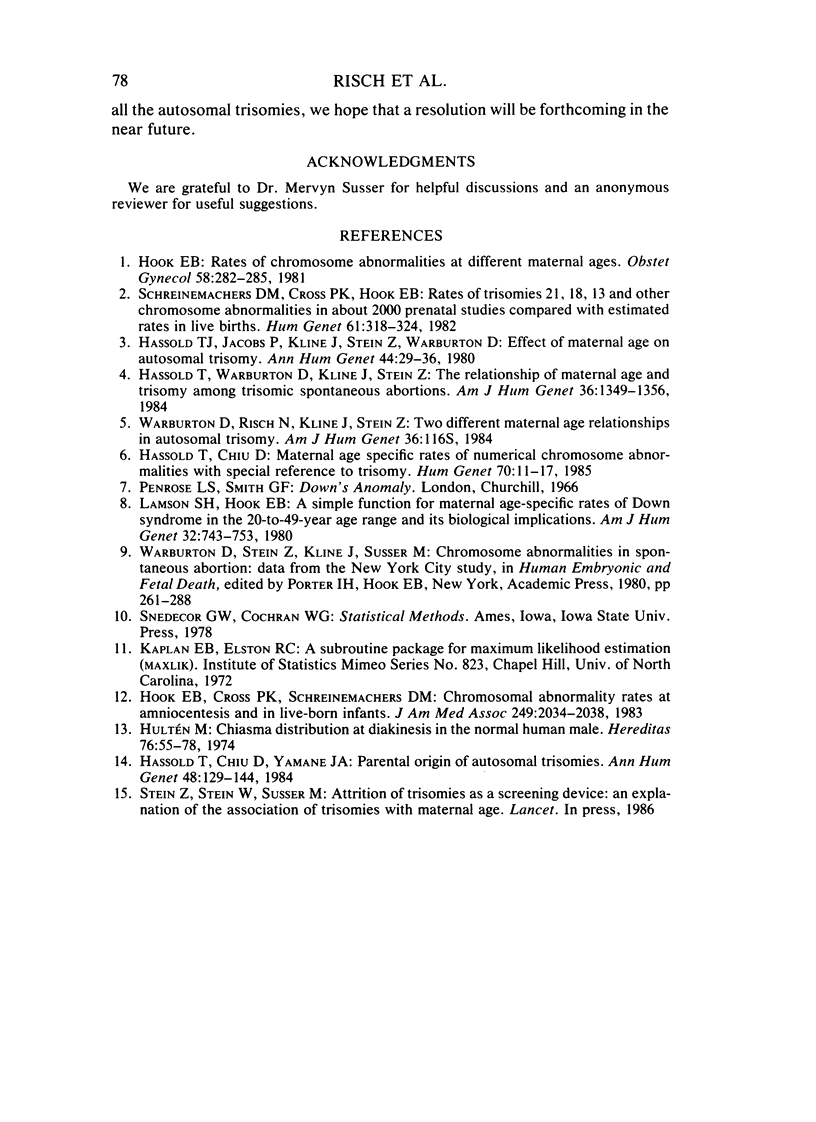
Selected References
These references are in PubMed. This may not be the complete list of references from this article.
- Hassold T., Chiu D. Maternal age-specific rates of numerical chromosome abnormalities with special reference to trisomy. Hum Genet. 1985;70(1):11–17. doi: 10.1007/BF00389450. [DOI] [PubMed] [Google Scholar]
- Hassold T., Chiu D., Yamane J. A. Parental origin of autosomal trisomies. Ann Hum Genet. 1984 May;48(Pt 2):129–144. doi: 10.1111/j.1469-1809.1984.tb01008.x. [DOI] [PubMed] [Google Scholar]
- Hassold T., Jacobs P., Kline J., Stein Z., Warburton D. Effect of maternal age on autosomal trisomies. Ann Hum Genet. 1980 Jul;44(Pt 1):29–36. doi: 10.1111/j.1469-1809.1980.tb00943.x. [DOI] [PubMed] [Google Scholar]
- Hassold T., Warburton D., Kline J., Stein Z. The relationship of maternal age and trisomy among trisomic spontaneous abortions. Am J Hum Genet. 1984 Nov;36(6):1349–1356. [PMC free article] [PubMed] [Google Scholar]
- Hook E. B., Cross P. K., Schreinemachers D. M. Chromosomal abnormality rates at amniocentesis and in live-born infants. JAMA. 1983 Apr 15;249(15):2034–2038. [PubMed] [Google Scholar]
- Hook E. B. Rates of chromosome abnormalities at different maternal ages. Obstet Gynecol. 1981 Sep;58(3):282–285. [PubMed] [Google Scholar]
- Hultén M. Chiasma distribution at diakinesis in the normal human male. Hereditas. 1974;76(1):55–78. doi: 10.1111/j.1601-5223.1974.tb01177.x. [DOI] [PubMed] [Google Scholar]
- Lamson S. H., Hook E. B. A simple function for maternal-age-specific rates of Down syndrome in the 20-to-49-year age range and its biological implications. Am J Hum Genet. 1980 Sep;32(5):743–753. [PMC free article] [PubMed] [Google Scholar]
- Schreinemachers D. M., Cross P. K., Hook E. B. Rates of trisomies 21, 18, 13 and other chromosome abnormalities in about 20 000 prenatal studies compared with estimated rates in live births. Hum Genet. 1982;61(4):318–324. doi: 10.1007/BF00276595. [DOI] [PubMed] [Google Scholar]


